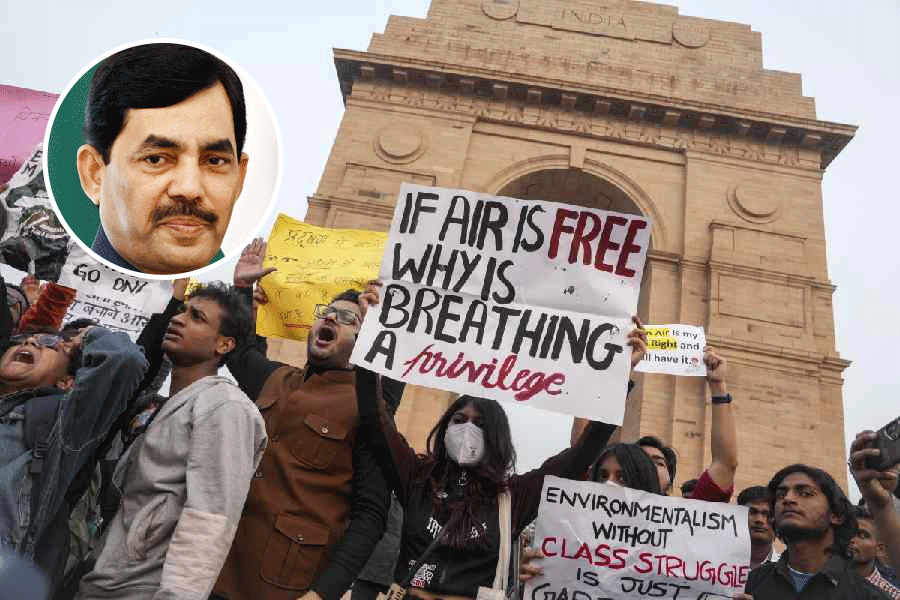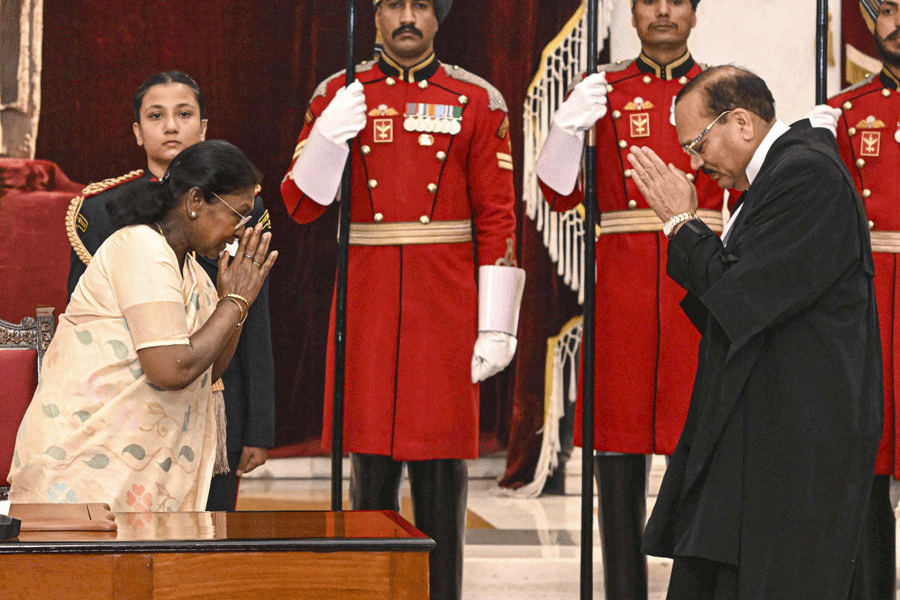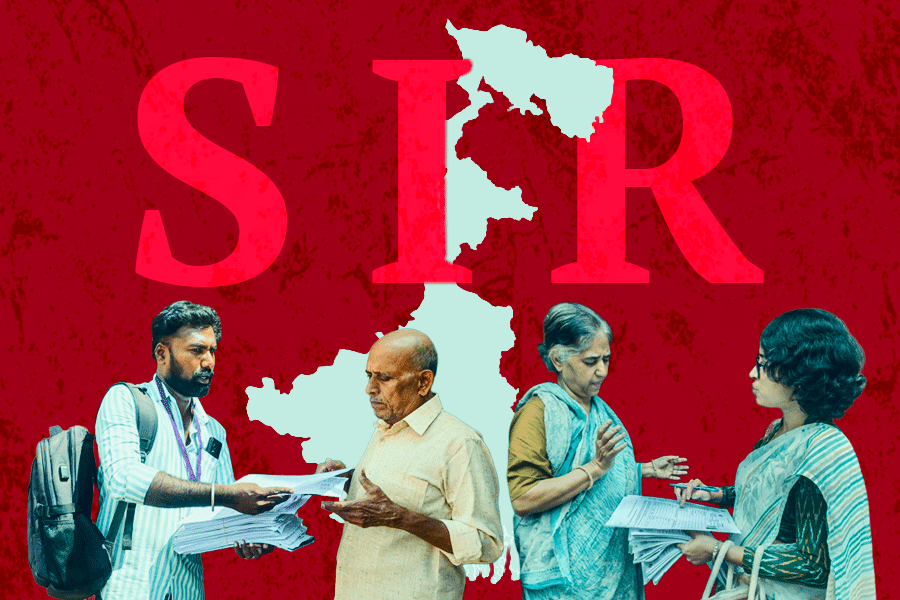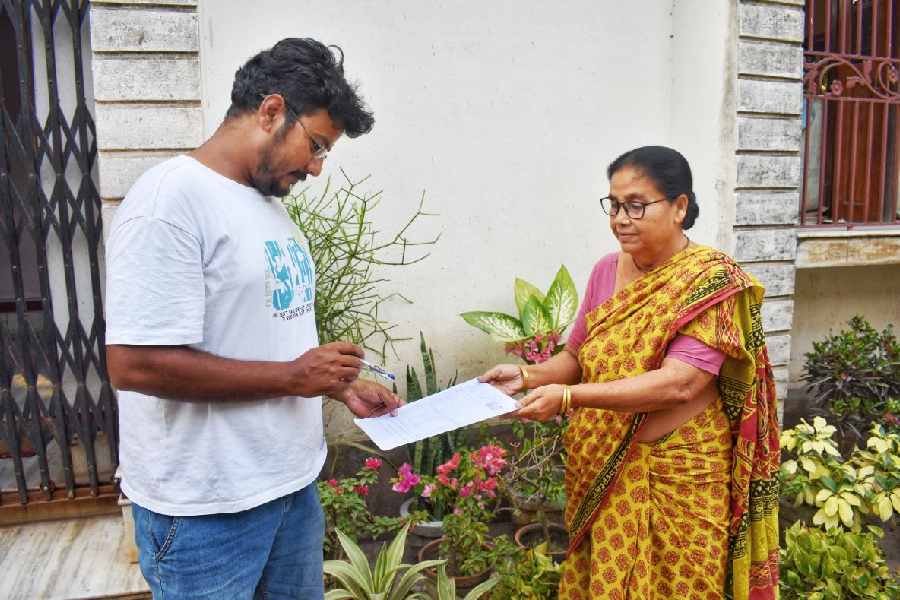
1D is a hit in Calcutta. Not the boy band that has the girls squealing but the traffic plan that has redeemed the Parama flyover.
Since Wednesday, traffic on Calcutta's newest and longest flyover has been travelling in one direction (1D) at a time - towards Park Circus from 7am to 1pm and the Bypass from 1pm to 10pm on weekdays.
While the arrangement ensures a smooth ride in 1D, those travelling in the opposite direction through the road below endure a frustrating stop-start-stop commute. But few have so far complained about this traffic strategy that deals out a hassle-free and a harrowing ride by turn.
Calcutta police's 1D solution to the chaos on the narrow Park Circus descent of the flyover officially named Ma echoes "Pareto optimal", a term that derives its name from the 19th century Italian economist Vilfredo Federico Damaso Pareto. The logic is that it is impossible to improve the condition of any single individual without harming the condition of another.
Calcutta has, of course, done that for more than three decades. The one-way traffic system on some busy roads not only keeps newcomers guessing but also keeps the city running. More than 40 streets follow the 1D routine, allowing traffic one way in the first half of the day and in the opposite direction during the other half.
"Between 1982 and 1983, two roads were converted into one-way - SN Banerjee Road and Lenin Sarani. That was the first occasion we used the one-way solution," recounted a senior officer in the traffic police department.
"Subsequently, several more roads were gradually brought into the one-way fold. Theatre Road and Park Street, followed by Brabourne Road, Bidhan Sarani, Amherst Street and KK Tagore Street."

Park Street model
Nirupam Som, who was the city police commissioner from 1980 to 1984, told Metro that it was during his tenure that traffic planners realised that the city's road space was shrinking - it is now around six per cent of the metropolitan area - and one-way movement was the only alternative to anarchy.
"The changes were made to ensure that traffic could run along most of the roads where two-way movement was a challenge," Som said.
One of the oldest and busiest roads in Calcutta where traffic direction changed more than once in response to the changing dynamics of traffic is the Park Street-Theatre Road loop.
Like all one-way restrictions meant to facilitate easy movement of vehicles towards the city's business district in the first half of the day, the timings on Park Street and Theatre Road were planned accordingly.
City-bound traffic, primarily vehicular movement from Mullickbazar to Chowringhee, was initially allowed through Park Street from 9am till noon. Simultaneously, traffic on Theatre Road would move from Chowringhee to Kalamandir between 9am and noon. Movement of vehicles on Camac Street was synchronised accordingly.
Two-way traffic was allowed on Park Street, Theatre Road and Camac Street only for four hours: from noon till 4pm. The direction would reverse on all three roads for the 4pm to 7pm slot. All three roads were free for two-way movement again between 7pm and 9am.
Senior officers in the traffic department said the one-way timings for Park Street, Theatre Road and Camac Street were altered at least six times to make the system work like it does now.
"Based on the volume of vehicles that were entering the city even after noon, the 9am to noon one-way schedule for Park Street was modified to 9am till 2pm. The next step was to extend the morning timings and start one-way movement from 8am instead of 9am," recalled a senior IPS officer who worked in the traffic department.
Eventually, the 2pm change in the direction of vehicles on these three roads was advanced to 1pm.
"Since the La Martiniere schools give over around 1.30pm, the 2pm timing was altered to 1pm. The idea was that traffic would be moving out of the city by the time the schools gave over, allowing for quicker dispersal of vehicles," the IPS officer said.
It was during current city police chief Surajit Kar Purkayastha's stint as the deputy commissioner of traffic police that the one-way night schedule was extended till 10pm.
Resistance to change
Sunil Bose, who lives off the Bypass, was thrilled to reach Park Street in 20 minutes from Hiland Park two days ago, thanks to the police's 1D strategy for the Parama flyover. "I hope they won't go back to two-way traffic anytime soon!" he said.
The city's enthusiasm for any such traffic compromise that works marks a change from the days of street protests and brickbats on Strand Road, Brabourne Road and several other places because of similar restrictions.
"Commuters used to stop and hurl abuse at us when we tried to change the traffic flow for better movement," said an officer who no longer does field duty.
The officer said traffic had become "smooth" in some of these places compared to the logjam of previous years. And this even after accounting for the surge in the number of vehicles over the past three decades.
"Around 1985, traffic would crawl along Central Avenue because of Metro Rail construction. Many people had resisted changes in traffic movement, questioning why should BB Ganguly Street-bound traffic take a diversion," recalled a senior traffic police officer.
"But gradually our strategy made a difference to traffic circulation in the central business district. AJC Bose Road, especially around Exide, and Cathedral Road were next. This was around the time when the AJC Bose Road flyover was being built."
Parama experiment
In trying to decongest the Parama flyover, the immediate challenge was to reduce the waiting time for traffic piling up on different roads around the Park Circus-seven-point crossing.
"The basic rule of traffic circulation is to reduce the logjam at least at one end so that motorists aren't forced to wait beyond three minutes," said an assistant commissioner of police in the traffic department.
Case studies have shown that a wait beyond three minutes increases the level of irritation among motorists manifold.
"When the Parama flyover was opened to two-way traffic, the waiting time at the Park Circus descent crossed the seven-minute mark. The AJC Bose Road flyover was choked too," the officer said.
The police were forced to frequently shut the flyover to ease the snarls. Traffic personnel told commissioner Purkayastha at a meeting last Tuesday that two-way traffic on the flyover had proved impossible to manage. Purkayastha didn't take long to realise that there was only one way out: 1D.
Engineer's choice
Engineers in the Calcutta Metropolitan Development Authority (CMDA), which is the custodian of the flyover, said switching to 1D was the right decision. "The capacity of a two-way road doubles if it is converted into one way, but the volume doesn't increase to that extent. So the drive is relatively smooth. Speed increases and it becomes easier in dispersing traffic at intersections," said an official in the traffic and transportation department of the CMDA.
Switchover strategy
The success of the 1D strategy lay in timing the switchover right. On Parama, as in Park Street, the direction of traffic changes at 1pm.
Before the switchover, the police have to ensure that by 1pm all vehicles heading towards the city exit the Parama flyover. Since the flyover is long, at 4.5km, ensuring complete traffic dispersal takes time. Therefore, the police have been stopping vehicles from taking the flyover 15-20 minutes in advance.
On the first day, vehicles were stopped from taking the flyover from the Bypass end nearly 25 minutes ahead of the 1pm deadline. The cut-off is being fine-tuned.
"An officer of the rank of assistant commissioner takes a ride and decides by when the switchover can take place. We have already reduced the start of the switchover process to 12 minutes ahead of the scheduled time," said a sergeant of the East traffic guard.
"Generally, it takes around five minutes for all vehicles to disperse from the Parama flyover before the change in direction. Sometimes, it could take slightly longer,"# he added.
Is one-way the only way to manage Calcutta's traffic? Tell ttmetro@abpmail.com











